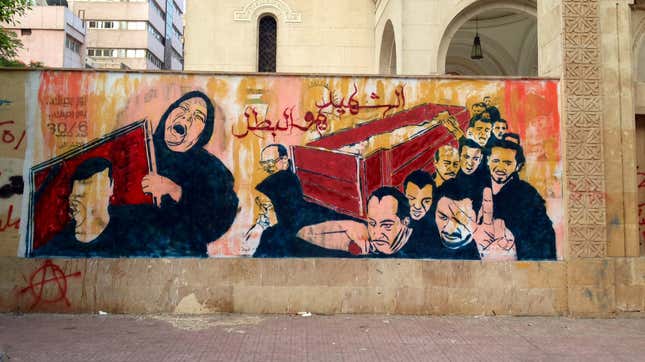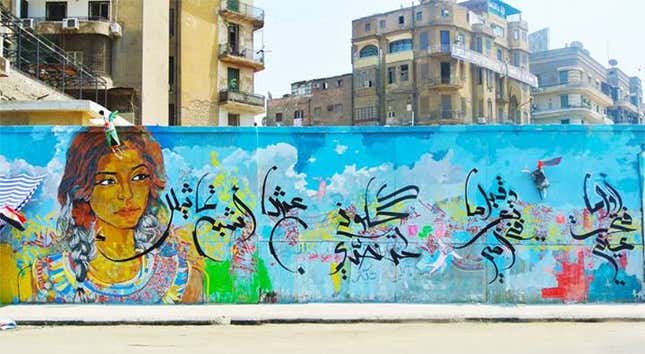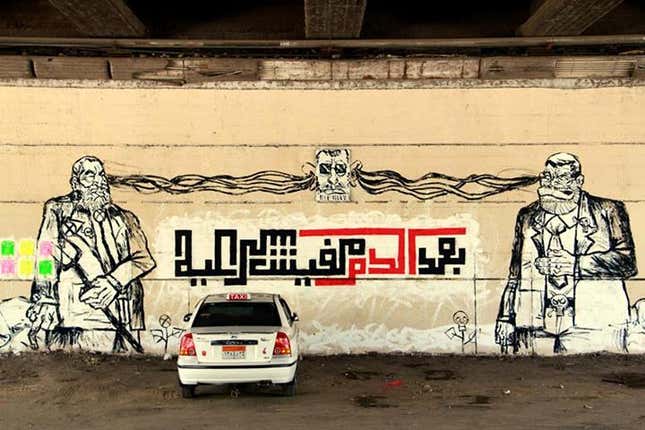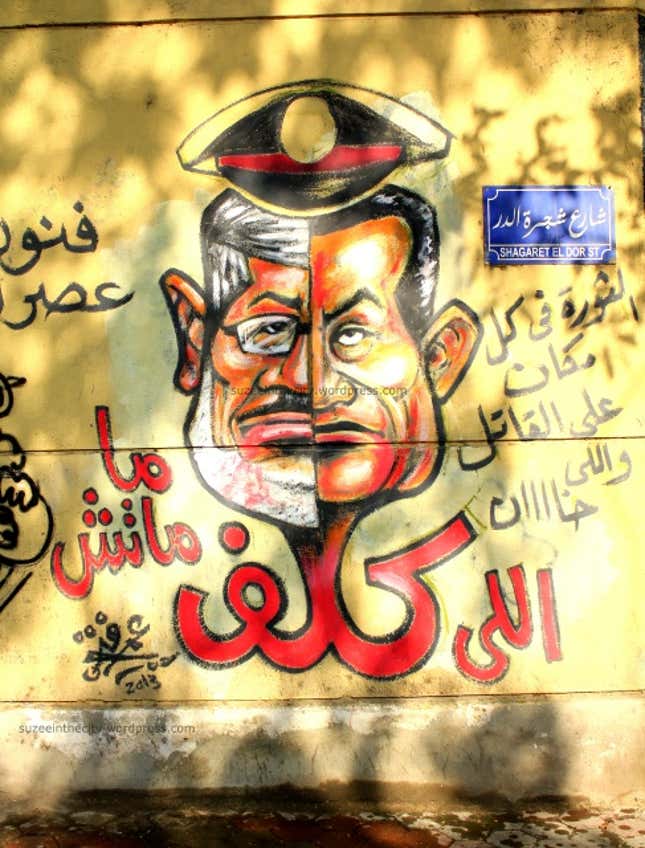Since elected president in the summer of 2012, Mohamed Morsi has become Public Enemy Number One to the community of politically astute graffiti artists in Cairo. The artists spend most of their time on the streets of Cairo, either protesting against the regime or painting their protest via epic murals in the city. To each of these artists, their fight is personal; many have lost friends in violent clashes between Egyptian protesters and police forces. They sincerely believe that their battle with the regime, the status quo, and President Morsi is through street art.
This mural of a funeral procession was painted by El Moshir on the wall of the Armenian Church in Downtown Cairo.

Above, the somber faces of mourners carrying a casket, the words “the martyr is the hero” are written. The funeral depicted is that of Gika, a young revolutionary who voted for President Morsi, and was one of the first martyrs to fall during Morsi’s term. The street artist made this mural in the weeks before the anti-Morsi protests on June 30, perhaps to remind Egyptians of the heroic many who died fighting for a better Egypt and their democratic rights.
A few streets away, Ammar Abo Bakr’s mural of an Egyptian woman featured the poetry of Ahmed Aboul Hassan painted in calligraphy by Sameh Ismail. Eagle-like sculptures were added by artist Alaa Abdel Hamid into the 19 meter-long mural. The mural is titled “Reclaiming Egyptian Identity,” and does so poignantly: the Egyptian woman’s determined expression and unveiled hair represent an identity that is not defined nor restricted by religious ideology. It’s almost the artists’ way of demonstrating the Egypt they want the world to know, a more liberal identity that is nonetheless firmly rooted in our Arab history and pharaonic heritage.

Under a bridge, a massive mural shows President Morsi on one side, and Muslim Brotherhood figure Kheirat El Shater as two imposing and evil characters, connected by brainwaves via Mohamed Badie, the spiritual leader of the Muslim Brotherhood. Around them, faceless figures bow in prayer to them. Between the two figures, the words read “after bloodshed there is no legitimacy.”

Through this mural, the street artists clearly criticize the betrayal of the Muslim Brotherhood to the revolution that led to the death of many innocent Egyptians. The artists refuse Morsi’s legitimacy for exploiting his power to help his Muslim Brotherhood brethren, for having blood on his hands and for being treated like a sacred leader by his followers. To them, Morsi is no God.
The mural was made by Mohamed Khaled, Mahmoud Magdy, Mohamed Ismail Shawki and Ali Khaled, with calligraphy by El Zeft.
Last of all, this mural by the artist Omar Fathy below shows the two faces of Mubarak and Morsi with the same military cap, an indication that Morsi is no different than Mubarak and still governs the country under the auspices of the Egyptian military.

The artist wrote: “He who has a successor, never dies,” indicating that Mubarak’s rule continues in the form of Morsi. The mural was made across from the Ministry of Culture in Cairo, where artists staged a sit-in protesting against the appointment of a Muslim Brotherhood-member to the ministry. The new ministry had plans to cut the arts budget and fired the heads of the Cairo Opera and dance groups.
Vicious, hilarious and uncensored, Cairo’s street art represents a community of resilient, articulate and indignant artists voicing their condemnation of the regime and its injustices to the streets. They are a vital thread in the fabric of the Egyptian revolutionary identity.